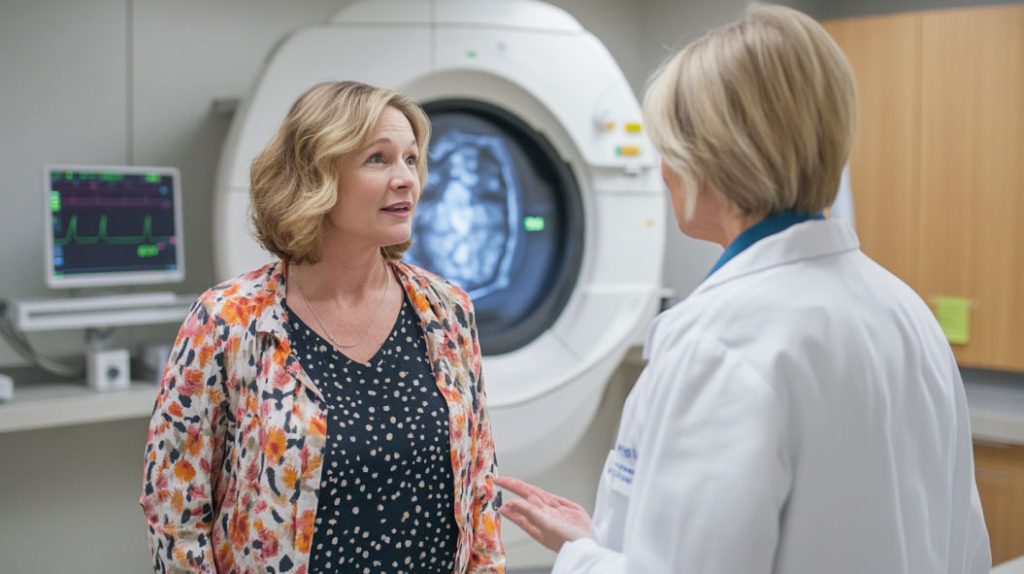Whether your car accident was in Bradenton on Manatee Avenue, or in Palmetto on US 19, the immediate focus is often on visible injuries—cuts, bruises, or broken bones that require urgent care. However, not all injuries are immediately apparent. In many cases, accident victims walk away from the scene feeling relatively fine, only to experience symptoms days or even weeks later. These hidden injuries, such as concussions, internal bleeding, or whiplash, can have serious long-term effects if left undiagnosed and untreated.
One of the most dangerous aspects of hidden injuries is their delayed onset. The body’s natural response to trauma often involves a rush of adrenaline, which can mask pain and other symptoms in the immediate aftermath of an accident. As a result, people might underestimate the severity of their injuries and delay seeking medical attention. Unfortunately, waiting too long can allow these conditions to worsen and complicate both physical recovery and the legal process.
Early medical evaluation is essential not only for your health but also for protecting your legal rights. Seeking prompt medical attention ensures that any hidden injuries are diagnosed and treated before they escalate, and it provides crucial documentation that can support a personal injury claim. This medical evidence is often critical in proving the extent of your injuries and the impact they may have on your life, helping you secure the compensation you deserve.
Today we will explore common hidden injuries that car accident victims may experience and explain why early detection is key to both your health and legal case.
Why Some Injuries Don’t Show Immediate Symptoms

Car accidents are highly stressful and traumatic events, often triggering the body’s fight-or-flight response. In the moments following a collision, your body releases a surge of adrenaline and endorphins, natural chemicals that help you cope with the immediate stress. While these chemicals may make you feel physically capable of handling the situation, they can also mask the symptoms of serious injuries. This delayed onset of symptoms is common and can be deceptive, leading accident victims to believe they are unscathed when, in fact, they may have sustained hidden injuries.
Delayed Onset: The Role of Adrenaline and Shock
When a car accident occurs, the body’s immediate response is to protect itself from further harm. Adrenaline increases alertness and reduces pain sensitivity, while shock prevents the brain from fully processing the trauma. This temporary numbing effect can cause accident victims to overlook injuries that may become apparent hours or even days later. For example, a concussion might not cause noticeable symptoms until the brain begins to process the impact after the initial surge of adrenaline subsides. Similarly, internal injuries can quietly worsen while the body is still in survival mode, putting the individual at serious risk without their knowledge.
Gradual Manifestation: Injuries That Develop Over Time
Some injuries take time to manifest fully. Whiplash, a common injury in car accidents, often doesn’t reveal its full severity until 24 to 48 hours after the collision. This is because whiplash involves damage to soft tissues and muscles in the neck, which gradually become inflamed and painful over time. Similarly, traumatic brain injuries (TBIs), such as concussions, may not show immediate signs like loss of consciousness or confusion but can lead to lingering headaches, dizziness, and cognitive difficulties that develop over several days. These injuries often start with mild discomfort that worsens as the body responds to the trauma, making early detection and treatment critical.
Lack of Visible Signs: The Danger of Internal Injuries
Unlike obvious external injuries such as cuts or fractures, internal injuries often come without any visible signs. Internal bleeding, organ damage, or even a punctured lung may not be immediately noticeable, but these injuries are life-threatening and require urgent medical attention. For instance, an individual might feel only minor discomfort after a crash, unaware that they have a ruptured organ or internal hemorrhaging. Symptoms like abdominal pain, shortness of breath, or dizziness may not appear until the injury has progressed, making early medical evaluation crucial for detecting these silent dangers.
Understanding why some injuries don’t show immediate symptoms is key to safeguarding your health and ensuring you receive the care and legal protection you need after an accident. Ignoring or delaying medical attention can result in more serious health complications and a weakened personal injury claim, underscoring the importance of seeking prompt evaluation after any car accident.
Common Hidden Injuries After a Car Accident

Even when a car accident appears minor, it can cause a range of hidden injuries that don’t show immediate symptoms. These injuries can go unnoticed for days or even weeks, making them particularly dangerous if left untreated. Understanding the nature of these hidden injuries is crucial for ensuring you seek appropriate medical attention as soon as possible. Below are some of the most common hidden injuries that car accident victims may experience:
Concussions and Traumatic Brain Injuries (TBIs)
Concussions and other traumatic brain injuries (TBIs) are some of the most serious hidden injuries that can occur after a car accident. Contrary to popular belief, you don’t need to lose consciousness to suffer a concussion. In fact, many individuals with concussions walk away from an accident feeling fine, only to develop symptoms later. A concussion occurs when the brain is jolted or shaken within the skull, often due to a sudden impact or violent motion.
The tricky part about concussions is that their symptoms can be subtle and develop gradually. In the hours or days following the accident, you may start to experience headaches, confusion, dizziness, nausea, or memory problems. You might also notice changes in mood or behavior, such as irritability, difficulty concentrating, or sleep disturbances. Because these symptoms can take time to appear, it’s easy to dismiss them as minor or unrelated to the accident. However, left untreated, a concussion or other TBI can lead to long-term cognitive and neurological issues.
Seeking immediate medical attention after a car accident can help detect these brain injuries early, even if you feel fine at first. Doctors can perform neurological exams and, if necessary, imaging tests like CT scans or MRIs to assess any potential damage to the brain. Early diagnosis not only improves your health outcomes but also strengthens your legal case by providing documented evidence of the injury.
Whiplash (whiplash cervical spine injury)
Whiplash is one of the most common hidden injuries in car accidents, particularly in rear-end collisions. It occurs when the head is suddenly thrown forward and then snapped back, causing strain or injury to the neck muscles, ligaments, and tendons. However, the symptoms of whiplash don’t always show up right away. Often, it takes 24 to 48 hours before the pain, stiffness, and discomfort begin to set in.
In many cases, whiplash symptoms include neck pain, limited range of motion, headaches (especially at the base of the skull), shoulder pain, and tingling or numbness in the arms. These symptoms can worsen over time, especially if the initial injury wasn’t recognized. Without treatment, whiplash can lead to chronic pain, reduced mobility, and even long-term complications such as spinal misalignment.
Since whiplash symptoms are often delayed, it’s important to seek medical evaluation immediately after a car accident, even if you don’t feel any neck pain at first. Medical professionals can assess the soft tissues and joints in your neck, ensuring that any strain or injury is addressed early on, preventing the condition from worsening.
Internal Injuries
Internal injuries are among the most dangerous types of hidden injuries because they are often difficult to detect without a thorough medical examination. A car accident can cause damage to vital organs, internal bleeding, or fractures that may not present any immediate symptoms. For example, trauma to the abdomen could result in a ruptured spleen, liver damage, or intestinal tears, all of which could lead to life-threatening internal bleeding.
The symptoms of internal injuries, such as abdominal pain, dizziness, fainting, or shortness of breath, may not become evident until hours or even days after the accident. By the time these symptoms appear, the condition may have already become critical, requiring emergency medical intervention. Because internal injuries can be so subtle, even a minor car accident should prompt a visit to the doctor to rule out any internal damage.
Doctors can use imaging tests like X-rays, ultrasounds, or CT scans to detect internal bleeding or organ damage early. Catching these injuries in time not only saves lives but also helps build a stronger personal injury case by linking the internal injury directly to the accident.
Soft Tissue Injuries
Soft tissue injuries, such as sprains, strains, and tears, are common but often go unnoticed immediately after an accident. These injuries involve the muscles, ligaments, and tendons that support the body’s joints. After a car accident, you might not feel any discomfort right away because soft tissue injuries often don’t cause immediate pain or swelling. Instead, the symptoms, such as soreness, stiffness, or bruising, may develop gradually over the next few days.
For example, you might feel fine the day after the accident, only to wake up with a sore shoulder or stiff back several days later. If untreated, soft tissue injuries can lead to chronic pain and reduced mobility, making it important to get checked out early. A doctor can assess any signs of soft tissue damage and recommend treatments like physical therapy or rest to prevent further complications.
Back Injuries
Back injuries are another common hidden injury that often goes unnoticed after a car accident. The force of the impact can cause damage to the spinal column, muscles, or nerves, leading to conditions such as herniated discs, fractures, or muscle strains. However, much like whiplash, the symptoms of back injuries often don’t appear until later. Initially, you may only feel slight discomfort, but over time, the pain can worsen as the injury becomes inflamed or irritated.
Herniated discs, for instance, can cause severe pain, numbness, or tingling in the legs or arms, depending on where the injury occurs in the spine. If left untreated, a herniated disc can lead to chronic pain or permanent nerve damage, affecting your ability to work or perform daily activities. Other back injuries, such as spinal fractures, can lead to long-term complications if not promptly addressed.
Visiting a doctor after a car accident, even if you have no immediate symptoms, allows for early detection of back injuries. X-rays, MRIs, or other diagnostic tools can help identify damage to the spine or soft tissues, allowing for timely treatment that can prevent long-term issues.
The Importance of Seeking Early Medical Attention For Your Health And Your Case
After a car accident, many people feel relieved if they walk away without any obvious or severe injuries. However, just because you don’t feel immediate pain or discomfort doesn’t mean you’re in the clear. Hidden injuries, such as concussions, internal bleeding, and soft tissue damage, often don’t present symptoms right away, but they can have serious long-term health effects if left untreated. Seeking early medical attention is crucial not only for your health but also for protecting your legal rights. Below are the key reasons why you should always visit a doctor as soon as possible after a car accident, even if you feel fine.
Comprehensive Examination: Detecting Hidden Injuries Early
One of the biggest dangers after a car accident is underestimating the severity of potential injuries. Your body’s initial response to trauma often involves a surge of adrenaline, which can mask pain and other symptoms. This is why you may feel fine immediately following the accident, only for symptoms of injuries like whiplash, concussions, or back pain to develop in the following days.
A comprehensive medical examination is the best way to detect hidden injuries before they become serious. Even if you don’t feel any immediate pain, a doctor can perform diagnostic tests, such as X-rays, CT scans, or MRIs, to look for signs of trauma that may not be externally visible. For example, internal bleeding, a punctured lung, or a herniated disc might not cause noticeable symptoms right away but can be identified through a thorough medical evaluation. Soft tissue injuries, like muscle tears or sprains, may also take time to show up but can be caught early by a healthcare professional who is trained to recognize these conditions.
By visiting a doctor immediately after an accident, you ensure that any hidden injuries are identified and treated before they have a chance to worsen. This proactive approach not only protects your health but also prevents potential complications that could arise if the injury goes unnoticed.
Documentation for Legal Claims: The Role of Medical Records
In addition to protecting your physical well-being, seeking early medical attention is also critical for supporting a personal injury claim. If you plan to pursue compensation for your injuries, medical records will be one of the most important pieces of evidence in your case. These records document the extent of your injuries, the treatments you received, and how your injuries are affecting your daily life.
When you visit a doctor right after an accident, the medical professional creates a detailed record of your condition at the time, including any injuries that may not have obvious symptoms. This documentation can be crucial in proving that the injuries you sustained were directly related to the accident and not caused by something else. Without this immediate medical documentation, it may be more difficult to link your injuries to the accident, especially if symptoms don’t appear until days or weeks later.
Insurance companies and defense attorneys often try to minimize or dispute claims by arguing that the injuries are not as severe as the plaintiff claims or that they occurred after the accident. However, timely medical records can counter these arguments by showing that you sought professional help as soon as possible, which adds credibility to your case. Medical documentation can also help establish a clear timeline of your treatment, showing the progression of your injuries and how they impacted your quality of life over time.
Preventing Complications: Early Treatment to Stop Injuries from Worsening
Hidden injuries can escalate quickly if not treated early. What might seem like minor discomfort could be an indication of a more serious condition. For example, internal injuries, such as internal bleeding or organ damage, can worsen over time and even become life-threatening without timely intervention. Similarly, untreated concussions or brain injuries can lead to long-term cognitive issues, memory problems, or chronic headaches. Soft tissue injuries, like whiplash, may start as mild stiffness but can turn into chronic pain or limited mobility if ignored.
By seeking early medical attention, you can prevent these injuries from getting worse. Early diagnosis allows doctors to start treatment right away, whether it’s prescribing medication, physical therapy, or recommending lifestyle changes to aid recovery. For example, addressing a concussion early can involve cognitive rest and other therapies that prevent more severe complications like post-concussion syndrome. In cases of internal injuries, emergency treatment may be required to prevent organ failure or other life-threatening conditions.
Beyond the physical benefits, prompt treatment also protects your legal rights. Insurance companies and defense lawyers often use delays in seeking medical care as a reason to question the validity of your injuries. They might argue that if you didn’t seek immediate treatment, your injuries couldn’t have been that serious. By seeking medical help right after the accident, you not only get the care you need but also avoid jeopardizing your claim by leaving gaps in your medical history.
How Hidden Injuries Impact Legal Claims

Strengthening Your Case: How Early Detection and Treatment Lead to Stronger Claims for Compensation
One of the most important factors in building a strong personal injury claim is the immediate detection and treatment of any injuries sustained in the accident. Even if you don’t feel pain or discomfort right away, visiting a medical professional promptly allows for the early identification of hidden injuries, ensuring that they are documented and treated before they worsen. This proactive approach is not only beneficial for your health but also significantly strengthens your legal case.
When you seek medical attention immediately following an accident, your doctor creates a record of your condition, including any initial symptoms or injuries that may not be immediately apparent. These medical records are critical in proving that the injuries were directly caused by the accident and not due to unrelated factors. In the legal process, insurance companies and defense attorneys often scrutinize the timeline of injury claims, looking for any gaps that could suggest the injury isn’t connected to the accident. By addressing hidden injuries early, you create a clear paper trail that establishes a direct link between the accident and your injuries, making it harder for the opposing party to dispute your claim.
Moreover, early treatment of hidden injuries can help mitigate the long-term effects of those injuries, which can be factored into your compensation claim. For example, seeking treatment for a concussion or internal injury right away allows your doctor to provide a more accurate prognosis and estimate future medical costs. This information is vital when calculating the full extent of your damages, ensuring that you receive appropriate compensation for both immediate and long-term medical expenses.
Challenges of Delayed Diagnosis: How Waiting Too Long to Seek Medical Help Can Weaken Your Legal Case
While early detection of hidden injuries strengthens your case, waiting too long to seek medical attention can have the opposite effect. Delayed diagnosis of injuries can significantly weaken your legal claim, as it gives the insurance company or defense attorney the opportunity to argue that your injuries were not caused by the accident, or that they are less severe than claimed.
When you don’t seek immediate medical care after a car accident, there’s a risk that any injuries that develop later will be perceived as unrelated or exaggerated. For example, if you wait several days or weeks before seeing a doctor for back pain or headaches, the insurance company might argue that your injury is the result of something that happened after the accident. This can lead to a reduced settlement offer or even a denial of your claim, as the connection between the accident and your injury becomes harder to prove with each passing day.
Additionally, the longer you wait to get medical help, the more difficult it becomes to fully document the severity of your injuries. For instance, if you wait too long to address a concussion, the symptoms may have worsened, making it harder to pinpoint when the injury occurred and what the full extent of the damage is. Delaying medical treatment can also result in the injury becoming more serious, leading to longer recovery times and increased medical costs—factors that could have been minimized with early intervention. Unfortunately, these additional complications may not be fully compensable if the delay in seeking treatment casts doubt on the legitimacy of your injury claim.
Proving Future Damages: Why Documentation of Latent Injuries is Crucial for Claiming Future Medical Costs and Pain and Suffering
One of the most important aspects of any personal injury case is proving the extent of future damages, including ongoing medical costs, lost wages, and pain and suffering. This is especially true for hidden injuries, which may not fully manifest until weeks or even months after the accident. Proper documentation of these injuries from the outset is essential for accurately estimating the long-term impact they will have on your life, which plays a critical role in determining the amount of compensation you are entitled to.
When you seek early medical attention, your doctor is able to assess the initial severity of the injury and provide a detailed prognosis for your recovery. This includes estimating how long you may need ongoing treatment, whether you will require future surgeries or therapies, and how the injury may affect your ability to work or enjoy daily activities. For example, if you sustain a back injury that worsens over time, having early documentation of the injury helps establish the trajectory of your condition, making it easier to claim compensation for long-term medical care and potential future surgeries.
Additionally, early medical records are crucial for proving non-economic damages, such as pain and suffering or emotional distress, that result from the injury. Without timely documentation, it becomes more difficult to prove the full scope of the impact the injury has had on your quality of life. A delayed diagnosis might also limit your ability to claim compensation for future pain and suffering, as the opposing party may argue that your condition is not as severe as you claim.
In personal injury cases, future damages are often the largest portion of compensation awarded, making it critical to have thorough and accurate medical documentation that clearly demonstrates the lasting effects of your injury. By seeking early medical attention and maintaining consistent records, you provide your attorney with the tools needed to argue for full and fair compensation, covering not only your immediate needs but also your long-term financial and emotional recovery.
Steps to Take After an Accident to Spot Hidden Injuries

After being involved in a car accident, it’s common to feel a sense of relief if there are no immediate, visible injuries. However, many serious injuries can go unnoticed for hours or even days after the crash. Hidden injuries, such as concussions, internal bleeding, and soft tissue damage, may take time to manifest, making it essential to take proactive steps to protect your health. Here are the key steps you should take after an accident to spot hidden injuries and ensure you receive the necessary medical attention.
1. Get Checked by a Medical Professional
The most important step you can take after a car accident is to seek a thorough medical evaluation, even if you feel fine or believe your injuries are minor. It’s common for the body’s adrenaline response to mask pain and other symptoms in the immediate aftermath of a collision. This can give you a false sense of well-being, leading you to overlook injuries that may develop later.
Visiting a doctor right away ensures that any hidden injuries, such as internal bleeding or concussions, are detected before they worsen. Medical professionals can perform a full physical examination, along with diagnostic tests like X-rays, CT scans, or MRIs, to check for injuries that may not be externally visible. For example, even if you don’t feel any head pain, a CT scan might reveal a mild concussion that could lead to serious cognitive issues if left untreated.
Prompt medical evaluation also serves as critical documentation for any legal claim you may need to file. By seeing a doctor immediately, you create a record of your injuries and their connection to the accident, which strengthens your personal injury case. Insurance companies often scrutinize medical records, so having a documented evaluation right after the accident makes it easier to prove the severity of your injuries and secure fair compensation.
2. Monitor Symptoms Closely
In the days and weeks following a car accident, it’s crucial to pay close attention to how your body feels. While some injuries, like cuts or broken bones, are immediately obvious, others take time to develop. Common hidden injuries, such as whiplash, back pain, or traumatic brain injuries, often present delayed symptoms that can appear days after the crash.
As you recover from the initial shock of the accident, watch for any changes in how you feel. This includes new or worsening symptoms like headaches, dizziness, neck pain, back pain, or unexplained fatigue. Cognitive issues, such as difficulty concentrating, memory problems, or mood swings, can also be signs of a concussion or other traumatic brain injury that wasn’t immediately apparent.
It’s a good idea to keep a written record of any symptoms you experience after the accident. Documenting these changes can help you track the progression of your injuries and provide valuable information to your doctor. It also serves as evidence in your personal injury case, showing how the accident has impacted your health over time. A symptom journal that outlines your physical and emotional challenges can strengthen your legal claim for compensation by highlighting the full extent of your injuries.
3. Follow Up with Specialists
Sometimes, hidden injuries require specialized care beyond what an emergency room or primary care physician can provide. If you notice new or persistent symptoms in the days or weeks following the accident, it’s important to follow up with specialists who can provide a more in-depth evaluation. Depending on the type of injury, this could include seeing a neurologist, orthopedist, or chiropractor.
- Neurologists are essential if you’re experiencing any symptoms of a traumatic brain injury, such as persistent headaches, dizziness, or cognitive difficulties. They can perform specialized neurological tests to assess your brain function and recommend treatments to help you recover.
- Orthopedists focus on injuries related to the bones, joints, muscles, and ligaments. If you’re dealing with back pain, whiplash, or soft tissue injuries that don’t seem to be improving, an orthopedist can provide diagnostic imaging and treatment options like physical therapy or surgery if necessary.
- Chiropractors can help with musculoskeletal injuries, especially those related to the spine, neck, and back. They can offer non-invasive treatments like spinal adjustments, which can alleviate pain from whiplash or back injuries.
Seeing a specialist not only helps ensure you receive the correct treatment but also builds a more comprehensive medical record for your personal injury claim. Specialists can provide detailed assessments of your injuries, offer prognoses for your recovery, and document the need for future medical care. This information is invaluable when negotiating a fair settlement with insurance companies, as it shows the long-term impact of your injuries and justifies compensation for ongoing medical expenses and pain and suffering.
After a car accident, it’s easy to overlook injuries that don’t show immediate symptoms, but doing so can have serious consequences for both your health and your legal rights. Hidden injuries like concussions, internal bleeding, and soft tissue damage may not present themselves until hours or days after the accident, but they can lead to long-term complications if not treated promptly. This is why it’s essential to act quickly, even if you feel fine in the immediate aftermath of the crash. By seeking early medical attention, you can ensure that any hidden injuries are diagnosed and treated before they worsen, protecting your well-being and preventing more serious health issues down the road.
From a legal standpoint, prompt medical evaluation is equally important. Early detection of injuries strengthens your personal injury claim by providing clear documentation that links your injuries to the accident. Insurance companies often scrutinize delays in seeking medical care, and any gap between the accident and your treatment could weaken your case. By acting quickly, you establish a solid foundation for your claim, ensuring that you receive fair compensation for your medical expenses, lost wages, and pain and suffering.
In addition to seeking medical care, it’s critical to consult with an experienced attorney who can guide you through the legal process. Car accidents and personal injury claims can be complex, especially when dealing with hidden injuries that require careful documentation and expert testimony. An attorney will help you navigate these challenges, ensuring that your case is handled with the thoroughness and expertise it deserves. They will also protect your rights, advocating on your behalf to secure the maximum compensation possible.

At Goldman, Babboni, Fernandez, Murphy & Walsh, we understand the physical, emotional, and financial toll that car accidents can take, especially when hidden injuries are involved. Our experienced team lives and works in Manatee County and is dedicated to helping accident victims receive the care they need and the compensation they deserve. We work closely with medical professionals to ensure that your injuries are properly documented and that your legal claim is as strong as possible.
If you or a loved one has been injured in a car accident, don’t wait—contact us today for a free consultation. Let us help you protect your health and your legal rights, so you can focus on what matters most: your recovery.
The post Hidden Injuries After a Car Accident In Bradenton and How to Spot Them appeared first on Justice Pays.




